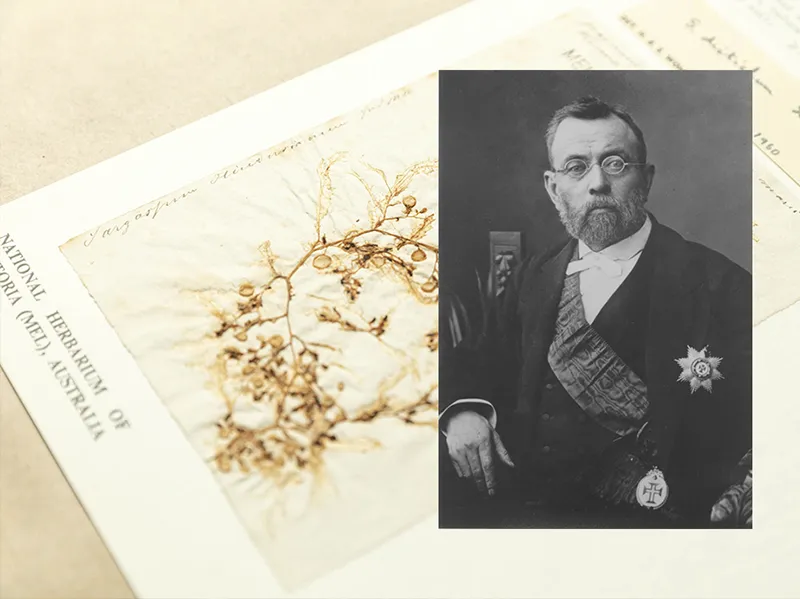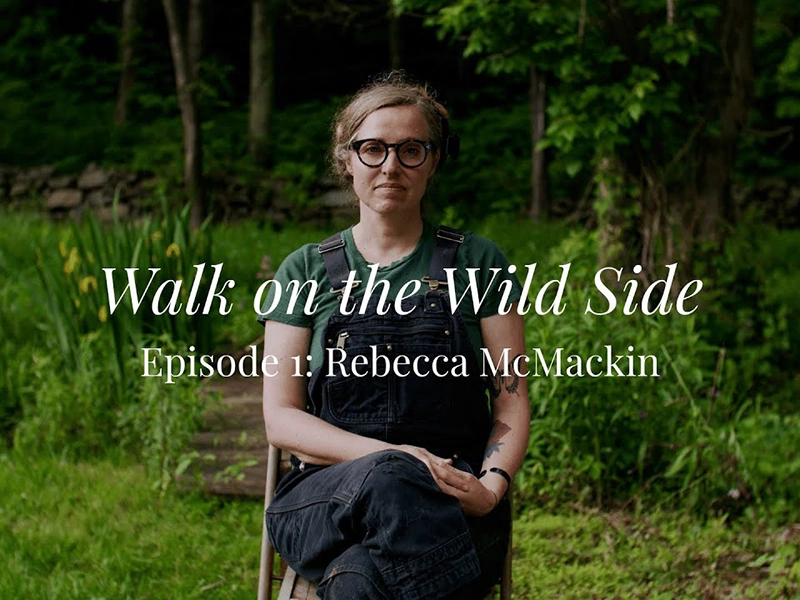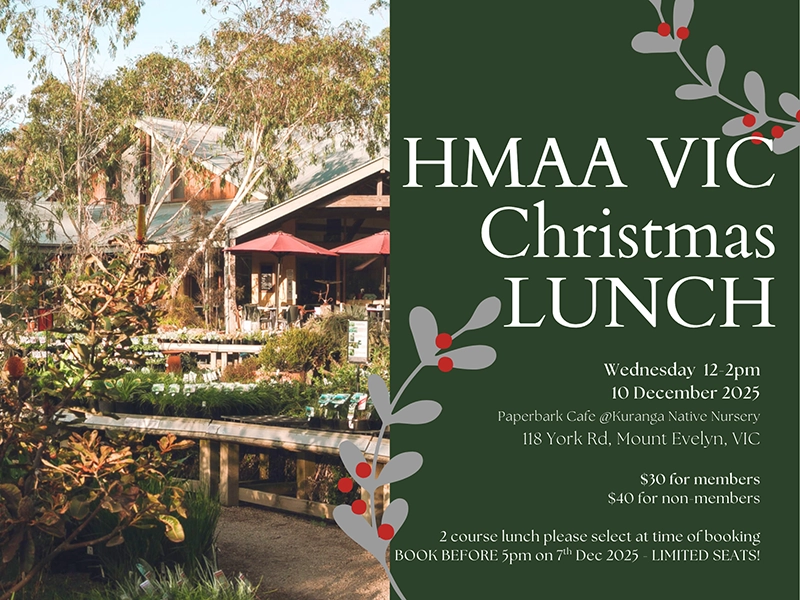For National Science Week, scientists at Royal Botanic Gardens Victoria will host a free talk about the legacy of the first Gardens director, founder of the National Herbarium of Victoria, and first Government Botanist of Victoria, Baron Ferdinand von Mueller. During the talk, scientists will share their favourite Herbarium specimens from Mueller’s time and discuss their contemporary significance. The talk also celebrates 200 years since Mueller’s birth.
“Baron Ferdinand von Mueller was a botanist, explorer, and patron of science, who founded our collection of plant, algal and fungal specimens through his own collecting, and through a network of collectors and scientists that he established globally”, said Alison Vaughan, Manager Collections at Royal Botanic Gardens Victoria.
Approximately two-thirds of the 1.5 million plant, algae and fungi specimens in the National Herbarium of Victoria today were amassed through Mueller’s endeavours.
Within a month of his appointment as Government Botanist in 1853, Mueller made his first official collecting trip, to the Buffalo Mountains and southern Gippsland, thereby beginning the systematic documentation of Victoria’s plants and fungi, which RBGV scientists continue today.
Initially, Mueller housed specimens in his personal residences at the Gardens, and by 1858, Mueller began urging the government to provide him with a suitable building for his growing collection of 45,000 specimens.
In 1860, a Herbarium was constructed on a site in the Domain near the present National Herbarium of Victoria. By 1867, the collection had grown to 350,000 specimens.
During his career, Mueller is believed to have exchanged over 150,000 letters with individuals in a vast national and international network of correspondents.
“Mueller earned a considerable global reputation for his work in describing and promoting the Australian flora and is Australia’s best-known nineteenth-century scientist,” said Ms Vaughan.
Cosmopolitan in his outlook, Mueller joined myriad scientific societies around the world and became a vital link between Australian scientists and the international scientific community. Mueller collected in every state of Australia on horseback and on foot, and in later life became a leading promoter of exploration in Central Australia, in New Guinea and in Antarctica.
Mueller was Director of the Gardens for fifteen years, during which time he increased the living collection from 1,500 species to nearly 7,000 species. He was controversially removed from the position in 1873 after influential Melbourne horticulturists lobbied successfully for the appointment of director who would implement a more English landscape design. Devastated by what he saw as a personal rejection, he never set foot in the Gardens again.
In 1934, the herbarium collection was moved across the road to a new building, today’s National Herbarium of Victoria.
With over 1.5 million irreplaceable plant, algae and fungi specimens, the State Botanical Collection is the largest herbarium collection in Oceania and includes the largest fungarium in the Southern hemisphere. It also includes Australia’s most comprehensive library of botanical books, journals and artwork, the foundation of which was Mueller’s own collection.
“Mueller has left us with one of the world’s richest archives of botanical and fungal diversity. It is a legacy that underpins the vital science and conservation work we do at the Gardens,” said Ms Vaughan.
Royal Botanic Gardens Victoria invites the public to learn more about Mueller’s work:
EVENT DETAILS
Specimens Across Time: A 200th birthday tribute to Baron von Mueller
Thu 14 Aug
6.30pm (1.5hrs)
Free
Bookings essential
Mueller Hall, enter via Oak Lawn Gate
To book to attend in-person or to register to watch it online, go to:
https://www.rbg.vic.gov.au/melbourne-gardens/whats-on-melbourne/specimens-across-time





